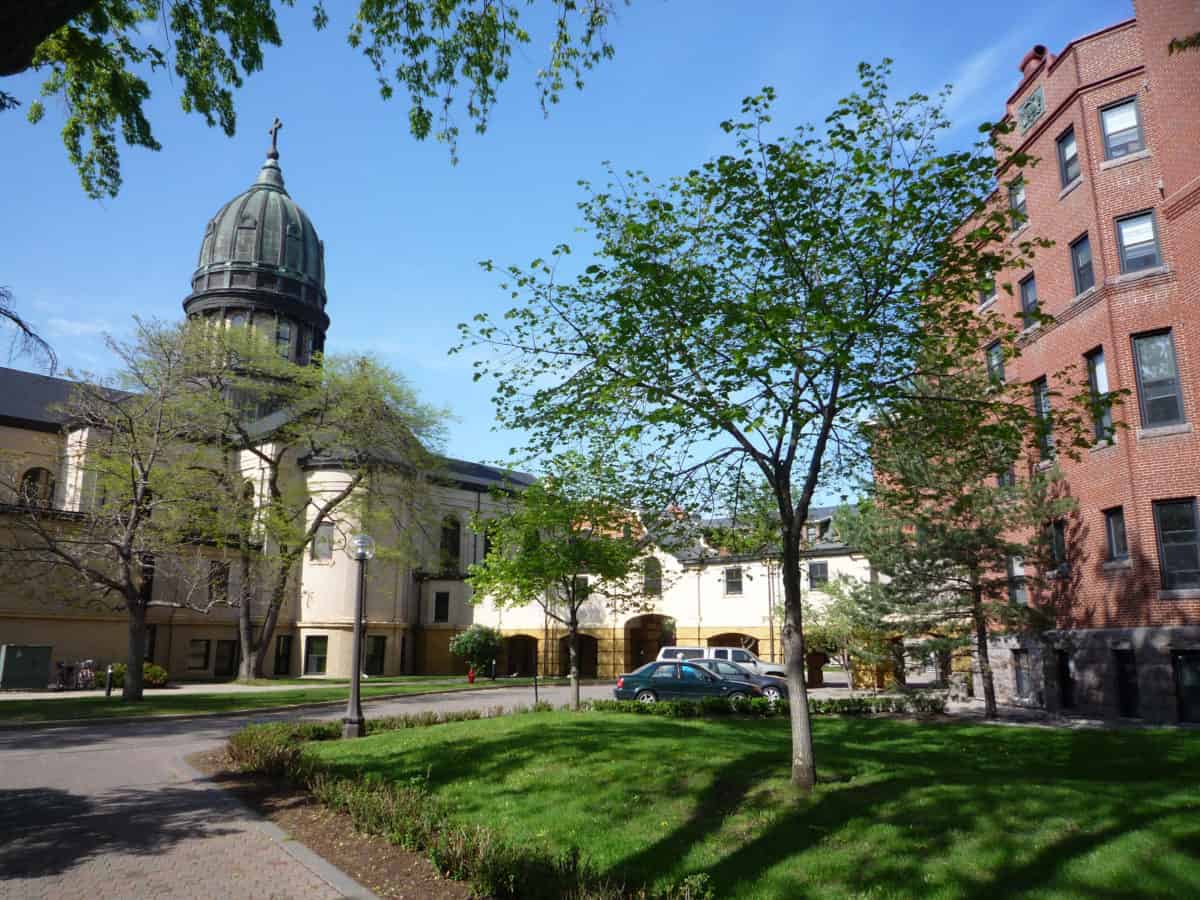I attended the Liberal Arts Illuminated conference, thanks to the support of Northwestern College. This is a collection of some of the notes and reflections I made during the conference sessions. (The reflection will surely continue, but I cannot guarantee that this post will be updated.) For the conference recordings and slides, follow this link.
By the way, this conference will forever be remembered by the participants as the conference where, thanks to the tornado warning, we got to socialize for two hours in the basement. I can only imagine the level of stress this could have caused on the organizers. Thanks again to the wonderful team of organizers, staffs, and helpers.
On to the notes.
(My thoughts/reflections are right-justified and set in italics.)
What is College For? (A. Delbanco)
One of the chief purposes of American higher education is to raise citizens for democracy. So some of the public funds (tax money) go to higher education.
But the public is losing trust in the higher education system. Public perception is that the current system is not so much raising educated citizens but benefiting the wealthy. (The income of the lower earning population has stagnated, while the higher earning population, like top 10%, has increased.)
But the college experience has to be a small rehearsal of democracy: Learning and practicing on how to think and how to choose.
Approximately 70% of U.S. population (by 29 years of age) do not have a bachelor’s degree. To say that the purpose of college education is to provide a small rehearsal of democracy – under such statistics – is thinking too highly of ourselves.
The Liberal Arts Experience: A Perspective from NSSE (C. Blaich, K. Wise, A. McCormick)
The difference between liberal arts institutions versus other institutions exists in average; but when the spread is considered, one realizes that there are more commonalities than differences.
It is not true that you don’t get to experience liberal arts, community, and close interaction with faculty at large public universities.
The contents of education are the same in both types of institutions. The effectiveness is higher (roughly 10%) on the liberal arts side.
But is that 10% difference in educational effectiveness enough to convince students to come to a liberal arts college? This effectiveness needs to go higher.
Final question: Suppose you’re choosing between two different institutions. A liberal arts college and a state university. Both institutions offer study abroad, internships, undergraduate research, first-year seminars, and theme-based living units. You’ve learned that on a number of measures, students at the liberal arts college grow about 5–10% more on learning outcomes. But the liberal arts college costs $10,000 more this year, and a good chunk of the students at the state university grow just as much on the learning outcomes as the students at the liberal arts college. Which would you choose? (Did we mention that the state university has huge football and basketball games? As well as multiple Starbucks, good shopping, and many more choices in student clubs, activities, and majors?) From the slides of the panel speakers
I agree that there is room for increasing teaching effectiveness. But this, at least when it comes to STEM education, is the easier part. Ultimately there must (and should) be some difference in the content. I do not propose that all syllabuses should look different from one another. But we should be able to find unique character or feature that is found in the curriculum of (a certain group of) liberal arts colleges.
Challenging the Constraints: The Economic Issues (C. Farrell, J. McGee)
Family income of middle & lower earning population has stagnated for a long time. And, during that time, the income gap has increased.
There has been a view that higher education is a way to improve one’s status. But now more and more people believe that students from lower status go to college to benefit the students that are better off.
The demographics of the American population is changing.
New models or modes of higher education started to come up with the help of technology.
All this is bringing a serious challenge to liberal arts colleges.
Think what is negotiable and what is not.
Public Policy and the Liberal Arts (Z. Smith)
We need more data categories to better determine policies. But many of such categories hare hard to reach for the federal government.
Challenging the Constraints: Access (C. Christ, R. Hackett)
Four-year residential SLACs count for only 10% of student population.
Prospective students, a lot of times, do not know exactly how much it would cost them for higher education. They are also not aware of what type of education is out there for them (matching issue).
We need to deliberately forget what we have known or have done until now.
What Makes the Liberal Arts Essential for the Next 50 Years? (E.P. Blackhurst, S.G. Nugent, S.G. Poskanzer)
The core values of liberal arts education will always be relevant.
Even from the business perspective, qualities sought after in an employee are: having skills to integrate, synthesize, communicate, measure risk, and collaborate; be multicultural; be willing to fail and learn.
What are some current issues that are not being paid enough attention to? The prevalence of narcissism.
How bad is the current situation? From a pure business standpoint, this is the ripest moment for consolidation ever!
At least in mathematics classrooms, we can (and should) do much better to emphasize skills to integrate, synthesize, communicate, measure risk, and collaborate; being multicultural and being willing to fail and learn.
Transforming Students, Transforming Ourselves (R. Chopp)
What is the appropriate narrative of the current status of higher education? The “what” and the “how.”
Liberal arts education (or higher education) in America began to train ministers. Then to spread knowledge, to raise educated citizens. It was about “obligation”.
Now it’s about “transformation”. A holistic transformation. Not only knowledge but skills and virtues/habits. It’s about the practice. Through intentional community.
Students need more guidance, more mentoring. How to resolve a conflict. How to collaborate.
Where is this change coming from? We are realizing that life is a continual transformation. Education needs to provide the tools to face that reality.
Shouldn’t this transformational experience be readily accessible to the general public?
New Business Models for Higher Education (R. Beyer)
High financial challenge and high innovation requirement ask for revenue diversification; new programs; blended delivery; service, speed, statistics; macro-trend revenue; productivity; lowering costs.
Financial challenges need to be quantified: Financial gaps, operational gaps, infrastructure gaps.
Top 4 global skills needed (IBM Global CEO Study): Collaborative, Communicative, Creative, Flexible.
Why is there a gap between the employers’ assessment of the readiness of college graduates and that of the students’ (AACU Report 2015)?

Summary of macro trends: lower net revenue per student, rising costs, evolving consumer behavior, shifting student demographics.
The gap between employers’ and college graduates’ assessment is interesting. Would there be a meaningful difference between graduates of SLAC and other types of institutions?
Turbulent Waters: The Economic Future of America’s Colleges and Universities (R. Archibald)
Internal threats: Rising cost of providing a college education, stagnant household income, failing payoff to a college degree


Environmental threats: Change in demographics (among the west, midwest, northeast, and south, the south is the only part projected to have growing number of high school graduates in the next 15 years), declining support from state (net tuition increase)
Technological threats: online education, MOOCs, certificates and badges (majority of the students are returning students)
Survivors will be the ones that raise revenue.
- State flagships and other selective public schools: They will survive and maybe thrive
- Less selective state institutions: Real troubles ahead if states keep backing away and if demographics are challenging
- Selective privates: They will do just fine
- Less selective privates: Smaller schools with low endowments in demographically challenged states will continue to have difficult time

Suggestions: Index the Pell grant. Create a Pell grant bounty. Provide clear information on price.
Throughout the conference, there were many discussions regarding changes that could be made at the institutional level. But there are changes that can be made at the classroom level. At least for STEM fields, we know that active-learning pedagogy can help boost retention and eradicate achievement gaps among different student groups. Such changes are perhaps the most cost-effective way to help both students and institutions.

